Tribes can increase their resilience to hazardous materials incidents in several ways, including reducing the likelihood of a release (prevention), being prepared to respond to a potential release (preparedness), effectively responding if a release does occur (response), and coordinating planned restoration efforts (recovery).

Prevention
Reduce likelihood and minimize effects of an incident:
- Facility inspections
- Capacity building
- Public education and awareness
- Hazard and vulnerability assessment
- Improved infrastructure
Preparedness
Take actions to be ready for an incident:
- Know your response partners
- Prepare response plans
- Training and Exercises
- Receive spill notifications
- Standard operating procedures
Response
Protect human health and the environment:
- First response
- Saving lives
- Minimize hazards
- Incident command system in place
- Communication and coordination
Recovery
Provide community assistance and restore natural resources:
- Medical care
- Community outreach
- Reimbursements
- Damage assessment
- Restoration
EPCRA
Where do oil spills and chemical releases originate?
Transportation
Petroleum products and hazardous material spills occur during transportation via highway/roads, railroad, pipeline, air (including airports). See US Department of Transportation’s Pipeline and Hazardous Materials Safety Administration for information on safety programs, regulations, training, and funding opportunities (including Hazardous Emergency Preparedness grants to aid in the development, implementation, and improvement of emergency plans for Tribal communities and first-responder hazardous materials training).
Fixed Facilities
Facilities that handle, store, and use hazardous chemicals are required to provide information to the community and first responders under the Emergency Planning and Community Right to Know Act. Watch EPA’s video (to the left) to learn more. EPA’s Toxics Release Inventory (TRI) data allow Tribes to identify sources of toxic chemical releases that may impact the health of their communities, track changes in these releases over time, and prioritize efforts to reduce pollution from nearby facilities.
Businesses, Hospitals/Clinics and Schools
It is beneficial for first responders to know what hazardous materials may be present at Tribal businesses, clinics, and schools to be prepared for incidents and assist with possible transportation spills associated with deliveries and waste disposal.
Other Sources of Hazardous Waste
Tribes must train operators at transfer stations and other waste facilities for risks associated with hazardous waste, household hazardous waste, universal waste, and other unknowns that may present. Abandoned buildings/vehicles and illegal dump sites may also have hazardous materials that first responders must be trained to identify and call for EPA response assistance if they encounter situations they are not trained for. The Bureau of Alcohol, Tobacco, Firearms and Explosives (ATF) maintains several national response teams to support local authorities with major fire, explosion or bombing investigations. Additionally, releases may occur with agricultural operations, such as leaks from anhydrous ammonia tanks.
Note that this is not a comprehensive list. Please consider sending TLAC Tribal examples and additional areas of concern to share with your colleagues.
Tribal Topics of Interest
What are Tribal Emergency Response Commissions (TERCs)? Many Tribes have established TERCs to establish emergency planning districts, appoint Tribal Emergency Planning Committees (TEPCs), and supervise and coordinate all TEPC activities in their region. See EPA’s 2017 How to Better Prepare Your Community for a Chemical Emergency Factsheet.
Meet your emergency response partners now! One of the most effective tasks you can do to prepare your Tribe for spill response is to develop relationships with local and regional response partners before an emergency. See Federal Emergency Response Roles and Responsibilities and Emergency and Disaster Response Partners.
How can my Tribe request assistance with emergency response exercises? See FEMA’s National Exercise Program.
Tribes with National Response Center agreements in place will receive spill notifications based on provided jurisdictional information and selected incident criteria contained in the agreement application.
Tribal Spill Response Example
Watch Colville Confederated Tribes’ Tribal Response Program Manager, Don Hurst, presentation, Hazardous Material Spill Response at the Corner of Tribal Response Programs and the Oil Pollution Act (35-minute recording during the 2017 Tribal Lands and Environment Forum) discuss how the Tribe’s involvement with the Unified Command was critical to determine spill response objectives and priorities. Mr. Hurst has spent his career cleaning up legacy sites (currently under the Tribe’s Brownfields program) and talks about his experience working with local responders, federal on-scene coordinators, and contractors during a spill on the Colville reservation.
Related TLAC Webpages
Additional Websites of Interest
EPA’s Emergency Response webpage
NRC Application to Receive Spill Notification Reports
EPA’s Emergency Planning and Right to Know Act (EPCRA) in Indian Country
US Department of Transportation’s Pipeline and Hazardous Materials Safety Administration
